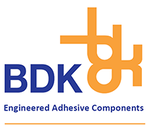Material selection plays a pivotal role in point of care (POC) diagnostic device performance, result accuracy, and overall healthcare efficiency. BDK are precision diagnostic adhesive converters, so we understand that suboptimal material choices can significantly impair diagnostic precision, delay result delivery, and inflate healthcare costs. In this article, we will explore the crucial factors to consider when choosing materials for POC diagnostic devices, emphasising the unique insights our industry brings to this critical process.
What Are Point of Care Diagnostic Devices?
POC diagnostic devices are sophisticated, often miniaturised, systems designed for rapid on-site testing by healthcare professionals or patients. These devices range from handheld electronic analysers to intricate molecular collection tools, utilising various sample collection methods. This includes microfluidic channels, functionalised membranes, or specialised collection reservoirs.
These advanced devices facilitate a wide range of diagnostic tests, including but not limited to:
- Quantitative analysis of glucose, cholesterol, and haemoglobin levels
- Detection of drugs of abuse and infectious agents
- Pregnancy testing
- Electrolyte and enzyme profiling
- Genetic marker identification
The latest innovations in POC diagnostics include wearable devices with integrated biosensors, enabling continuous monitoring and real-time data transmission to electronic health records.
Things to Consider for Material Selection in POC Diagnostic Devices
When it comes to choosing materials for POC diagnostic devices, here are the things you need to consider.
Sample Integrity Preservation
As precision adhesive converters, we recognise the importance of maintaining sample integrity. Materials must be carefully selected to prevent sample degradation, contamination, or unwanted interactions that could compromise test accuracy. This involves considering factors such as material purity, chemical inertness, and potential leachables.
Biocompatibility & Specimen Interaction
The diverse nature of biological specimens, including blood, saliva, urine, and tissue samples, necessitates materials with tailored biocompatibility profiles. We focus on selecting materials that not only prevent adverse reactions but also optimise sample collection and flow dynamics within the device.
Miniaturisation & Form Factor Optimisation
Smaller, more portable devices present unique challenges in material selection and conversion processes. We specialise in identifying and processing materials that maintain their performance characteristics when applied in microscale environments, often involving advanced techniques such as laser micromachining or precision die cutting.
Ergonomics & User Compliance
Material selection significantly impacts device ergonomics, particularly for wearable diagnostics. We consider factors such as flexibility, conformability, and hypoallergenic properties to ensure user comfort and encourage consistent use, which is crucial for longitudinal monitoring applications.
End of Life Considerations & Regulatory Compliance
As responsible manufacturers, we prioritise materials that align with both professional and domestic disposal protocols. This involves considering biodegradability, recyclability, and adherence to regulations such as REACH and RoHS, ensuring our components contribute to environmentally sustainable diagnostic solutions.
Adhesive Performance & Stability
In our role as adhesive converters, we place special emphasis on the selection and modification of adhesives used in POC devices. Factors we consider include:
- Long-term stability under various environmental conditions
- Compatibility with sterilisation processes
- Tailored adhesion properties for different device substrates and use cases
- Potential for controlled release or activation in specific diagnostic scenarios
Optical & Electrical Properties
For devices utilising optical or electrochemical detection methods, we carefully select materials with appropriate transparency, reflectivity, or conductivity properties. This may involve the integration of specialised films, conductive adhesives, or optically clear bonding solutions.
Manufacturing Scalability
We evaluate materials not only for their performance in the final device but also for their compatibility with high-volume manufacturing processes. This includes considerations such as roll-to-roll processing capabilities, precision die-cutting tolerances, and consistency across large production batches.
At our precision diagnostic adhesive converting facility, we leverage decades of experience and cutting-edge technology to manufacture components that meet the exacting demands of POC diagnostic devices. Our approach combines innovative bonding solutions with meticulous material selection to ensure optimal device performance, reliability, and user experience.
By partnering with material scientists, device manufacturers, and healthcare professionals, we continually refine our material selection and conversion processes. This collaborative approach enables us to stay at the forefront of POC diagnostic technology, contributing to the development of more accurate, efficient, and user-friendly diagnostic solutions.
For enquiries regarding custom material solutions for your POC diagnostic devices or to discuss potential collaborations, please contact our specialised team of adhesive converting experts.
